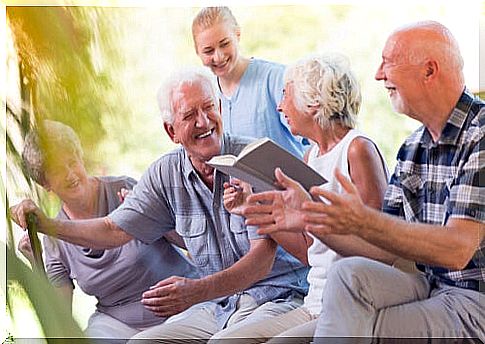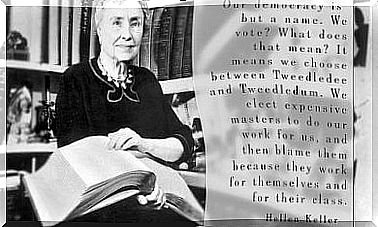The Importance Of Looking Face To Face

The importance of looking at each other’s face in an era dominated by new technologies where virtual relationships prevail above all else, is an urgent task in our society. It is a reality: social relationships are part of our lives, and if they are also of quality, they can contribute a lot to improving our quality of life and our well-being.
In this sense, broadly speaking, we can differentiate two types of relationships: those that we maintain in a digital or virtual environment, and those with people with whom we interact face to face (that is, in person). These two types of relationships are very diverse in nature and provide us with different benefits. Here we are going to focus on relationships in which looking face to face, physically, is possible.

The importance of looking face to face
The fact of maintaining face-to-face social relationships, that is, in which we have our interlocutor in front of us (be it friends, family, and even people we have just met) is one of the factors that favor quality social interactions.
In addition, being able to look at each other face to face also allows us to better connect with people, improve our empathy towards them and show us more receptive to what they are communicating to us.
In other words, face-to-face relationships enhance active listening, as well as making it possible to establish a deeper personal bond than we would establish with someone we only listen to on the phone, for example.
Benefits of looking at each other face to face
We are going to develop some of the benefits of face-to-face relationships. That is, of relationships where we meet the other person in person, maintaining more or less frequent contact.
Closest environment
Logically, this point will also depend on the type of relationship and the person in front of us; However, it is true that greater spatial proximity creates a closer and even more intimate climate, especially if we compare it with relationships where physical space is not shared with the other person.
Major connection
The closest environment, fueled by a close interaction, allows us to create a greater connection with our interlocutor. After all, it is not the same to see someone through a screen or talk on the phone than to be able to do it face to face.
In addition, we must remember here that non-verbal language (impossible to appreciate in relationships where we do not see our interlocutor) brings great richness to our relationships, both at a communicative and social level. Non-verbal language includes, among many other elements, the look, the gestures, the posture, the social distance …
Deeper relationships
In line with what we mentioned, looking face to face with the people with whom we interact, allows us to promote a climate in which deeper relationships are born.
This is not always the case: there are other factors that influence (frequency of contact, type of relationship, personality of each person, etc.) in the development of our relationships. However, the fact of being in contact face to face is always a plus, an ingredient that enriches the interaction.
What does the research say?
A study by Bruine de Bruin, Parker & Strough (2019) found that “a small number of quality face-to-face relationships increases the well-being of people of all ages”. In other words, the study shows how looking at each other face to face is more positive than maintaining relationships where “real contact” does not exist; that is to say, merely virtual relationships.
The researchers wanted to find out if younger adults were happier than older adults, in relation to the kinds of relationships both groups cultivated. It was observed how younger adults tend to cultivate a greater number of relationships or connections with others; However, these relationships are usually maintained, many times, through online social networks.
Instead, older adults tend to choose smaller circles of face-to-face relationships. In this sense, we see how the youngest are the ones who most nurture virtual relationships, perhaps due to the greater use of new technologies (although these are increasingly widespread also by older people).
Another of the results of the study by Bruine de Bruin et al. (2019) was that older adults reported higher levels of well-being than young adults, in relation to the type of relationships cultivated during their lives.

Do the looks speak?
Beyond the context of the interaction, we find it interesting to highlight here, and within interactions in person, the importance of looking into each other’s eyes when we interact with others. To maintain the connection with the gaze.
The phrase ” a picture is worth a thousand words ” is often heard . But what about a look? Perhaps we can also extrapolate it here, as there are looks that speak for themselves, which brings us back to the benefits that we have already mentioned about direct contact. That is, it is not only important, when it comes to improving the quality of our social relationships, that they be face-to-face, but also that we can share a physical and mental environment during them.
Thus, these benefits of which we were talking can be extrapolated to the fact of looking at ourselves with our loved ones, with the people we have just met, with our partner … The looks unite and allow us to connect with what the other person feels, so, no! you underestimate the value of a glance!









